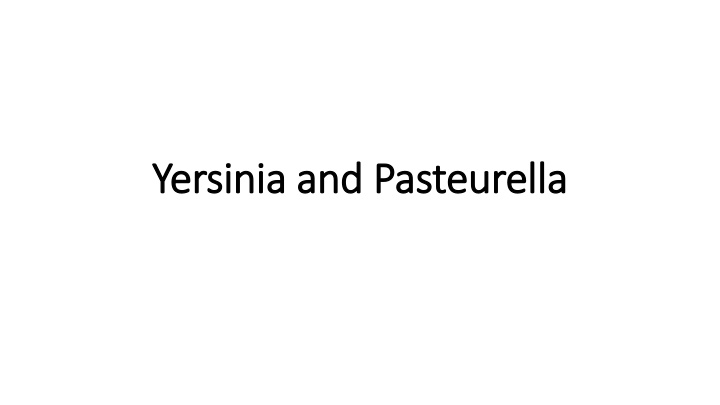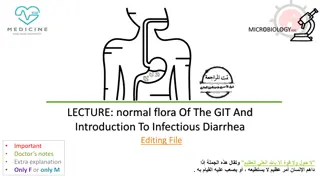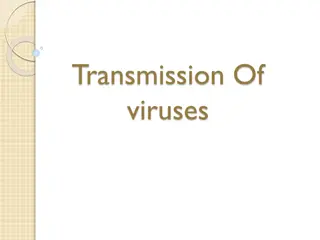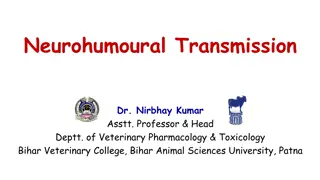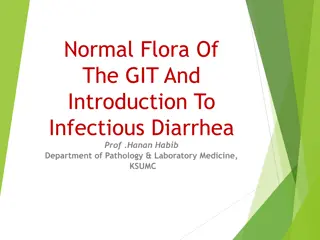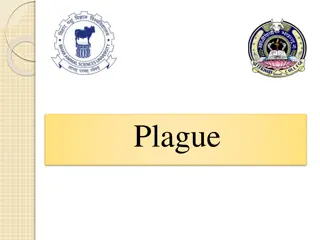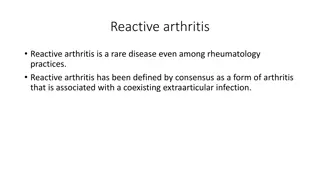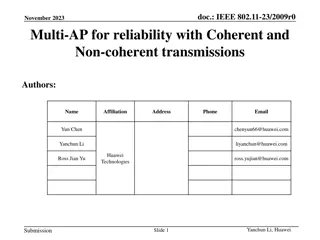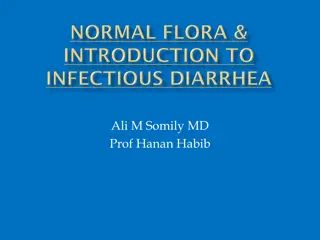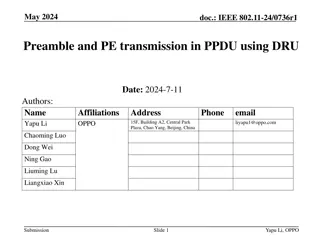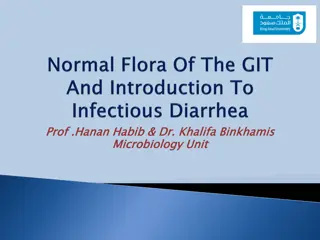Yersinia Pestis: Causes, Transmission, and Impact
Yersinia pestis, the bacteria behind the infamous plague, has a fascinating pathogenesis and epidemiology. From its origins in wild rodents to its transmission through fleas, learn about the key properties and cycles of this virulent pathogen.
Download Presentation

Please find below an Image/Link to download the presentation.
The content on the website is provided AS IS for your information and personal use only. It may not be sold, licensed, or shared on other websites without obtaining consent from the author.If you encounter any issues during the download, it is possible that the publisher has removed the file from their server.
You are allowed to download the files provided on this website for personal or commercial use, subject to the condition that they are used lawfully. All files are the property of their respective owners.
The content on the website is provided AS IS for your information and personal use only. It may not be sold, licensed, or shared on other websites without obtaining consent from the author.
E N D
Presentation Transcript
Yersinia Yersinia and and Pasteurella Pasteurella
YERSINIA YERSINIA Disease Yersinia pestis is the cause of plague, also known as the black death, the scourge of the Middle Ages. It is also a contemporary disease, occurring in the western United States and in many other countries around the world. Two less important species, Yersinia enterocolitica and Yersinia pseudotuberculosis.
Important Properties Y. pestis is a small gram-negative rod that exhibits bipolar staining (i.e., it resembles a safety pin, with a central clear area). Freshly isolated organisms possess a capsule composed of a polysaccharide protein complex. The capsule can be lost with passage in the laboratory; loss of the capsule is accompanied by a loss of virulence. It is one of the most virulent bacteria known and has a strikingly low ID50(i.e., 1 to 10 organisms are capable of causing disease).
Pathogenesis & Epidemiology The plague bacillus has been endemic in the wild rodents of Europe and Asia for thousands of years but entered North America in the early 1900s, probably carried by a rat that jumped ship at a California port. It is now endemic in the wild rodents in the western United States, although 99% of cases of plague occur in Southeast Asia.
The enzootic (sylvatic) cycle consists of transmission among wild rodents by fleas. In the United States, prairie dogs are the main reservoir. Rodents are relatively resistant to disease; most are asymptomatic.
The flea ingests the bacteria while taking a blood meal from a bacteremic rodent. A thick biofilm containing many organisms forms in the upper gastrointestinal tract that prevents any food from proceeding down the gastrointestinal tract of the flea. This blocked flea then regurgitates the organisms into the bloodstream of the next animal or human it bites.
The organisms inoculated at the time of the bite spread to the regional lymph nodes, which become swollen and tender. These swollen lymph nodes are the buboes that have led to the name bubonic plague. The organisms can reach high concentrations in the blood (bacteremia) and disseminate to form abscesses in many organs. The endotoxin-related symptoms, including disseminated intravascular coagulation and cutaneous hemorrhages, probably were the genesis of the term black death.
In addition to the sylvatic and urban cycles of transmission, respiratory droplet transmission of the organism from patients with pneumonic plague can occur. The organism has several factors that contribute to its virulence: (1) the envelope capsular antigen, called F-1, which protects against phagocytosis; (2) endotoxin (3) exotoxin (4) two proteins known as V antigen and W antigen. The V and W antigens allow the organism to survive and grow intracellularly, but their mode of action is unknown.
Clinical Findings Bubonic plague, which is the most frequent form, begins with pain and swelling of the lymph nodes draining the site of the flea bite and systemic symptoms such as high fever, myalgias, and prostration. The affected nodes enlarge and become exquisitely tender. These buboes are an early characteristic finding. Septic shock and pneumonia are the main life-threatening subsequent events. Pneumonic plague can arise either from inhalation of an aerosol or from septic emboli that reach the lungs.
Laboratory Diagnosis Smear and culture of blood or pus from the bubo is the best diagnostic procedure. Great care must be taken by the physician during aspiration of the pus and by laboratory workers doing the culture not to create an aerosol that might transmit the infection. Giemsa stain reveals the typical safety-pin appearance of the organism better than does Gram stain.
Treatment The treatment of choice is a combination of streptomycin and a tetracycline such as doxycycline, although streptomycin alone can be used. Levofloxacin can also be used. In view of the rapid progression of the disease, treatment should not wait for the results of the bacteriologic culture.
Prevention Prevention of plague involves controlling the spread of rats in urban areas, preventing rats from entering the country by ship or airplane, and avoiding both flea bites and contact with dead wild rodents. A patient with plague must be placed in strict isolation (quarantine) for 72 hours after antibiotic therapy is started.
PASTEURELLA PASTEURELLA Disease Pasteurella multocida causes wound infections associated with cat and dog bites. Important Properties P. multocida is a short, encapsulated gram-negative rod that exhibits bipolar staining.
Pathogenesis & Epidemiology The organism is part of the normal flora in the mouths of many animals, particularly domestic cats and dogs, and is transmitted by biting. About 25% of animal bites become infected with the organism, with sutures acting as a predisposing factor to infection. Most bite infections are polymicrobial, with a variety of facultative anaerobes, especially Streptococcus species, and anaerobic organisms present in addition to P. multocida. Pathogenesis is not well understood, except that the capsule is a virulence factor and endotoxin is present in the cell wall. No exotoxins are made.
Clinical Findings A rapidly spreading cellulitis at the site of an animal bite is indicative of P. multocida infection. The incubation period is brief, usually less than 24 hours. Osteomyelitis can complicate cat bites in particular, because cats sharp, pointedteeth can implant the organism under the periosteum.
Laboratory Diagnosis The diagnosis is made by finding the organism in a culture of a sample from the wound site. Treatment Penicillin G is the treatment of choice. There is no significant antibiotic resistance. Prevention People who have been bitten by a cat should be given ampicillin to prevent P. multocida infection.
